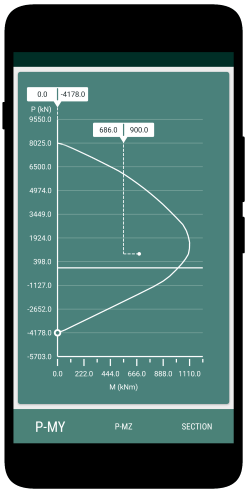Column is basically a vertical structure, which helps to transfer the load from top to bottom in a framed structure. Specifically columns transfer the compressive load from top floors, ceiling or beam to the foundation or to the beams. The cross section of the column is mostly rectangular , square or circular. Sometimes we modify these shape to meet the aesthetics of the building.
Generally we design the columns so as to resist the axial compression load or sometimes a combination of bi-axial/ uni-axial moment acting on it. It is very important to consider all these loads which is basically due to the frame action under gravity and lateral loads.
Types of Column
Columns are broadly classified on the basis of :
- Based on shape: Columns are classified on the basis of shapes such as, rectangular, circular, L shape, spiral columns.
- Based on the material used for construction: We use many different types of material for constructing columns. Such as reinforced concrete, steel, timber, brick, blocks, stone masonry.
- Type of loading: On the basis of loading one can classify columns as axially loaded columns, uni-axially loaded columns or bi-axially loaded columns.
- Depending on the value of slenderness ratio: short column and long column.
Categorisation of Columns
Categorisation of columns is extremely helpful because the procedure for the design of a colurm in each of the three categories is different.
The columns shall be first divided into the following three categories.
- Category – I: These columns carry beams either in all four directions or only in opposite directions and are predominantly subjected to axial compression because moments due to loads on beams on opposite sides balance each other. Structurally, these columns can be termed as axially loaded columns. Therefore, they require practically very little or no allowance for axial load.
- Category -II: Columns subjected to axial compression and uniaxial bending, columns along the sides of a building that carry beams either in three orthogonal directions or a single beam in one direction are subjected predominantly to axial load and uniaxial bending due to unbalanced moment transferred from a single beam on one side.
- Category – III: Corner Columns or Columns subjected to Axial Compression and Biaxial Bending Corner columns or the columns which carry beams in two perpendicular directions are subjected to biaxial bending due to beams in orthogonal directions, They require large increase in axial load to account for the effect of biaxial bending for obtaining an Equivalent axial load.
Conclusions
The design of the R.C.C columns section is according to the codal provision IS: 456-2000. By directly using the charts available in SP 16, one can design the columns section efficiently. Several numerical examples is present in SP 16.
- Purpose and Function: Columns are vertical structures that transfer loads from top to bottom in a framed structure.
- Shapes and Aesthetics: Columns come in various shapes, including rectangular, circular, L-shaped, and spiral. Modify the shape of a column to meet the aesthetic requirements of the building.
- Load Resistance and Design: Design columns to resist axial compression and moments.
- Codal Provisions: The design of R.C.C columns follows specific codal provisions, such as IS: 456-2000. Resources like SP 16 provide charts and guidance for efficient column section design.
You can use our android application to design all the different reinforced column sections.
Column design
- RCC Column Design is a free app for designing reinforced concrete columns as per Indian Standards.
- RCC Design and detailing could be performed for uniaxial and biaxial bending conditions specified in IS456:2000
- Option to save the design projects in local storage.
- Detailed calculation steps presented for verification and validation.

Check this post to know why we need reinforcement in concrete.